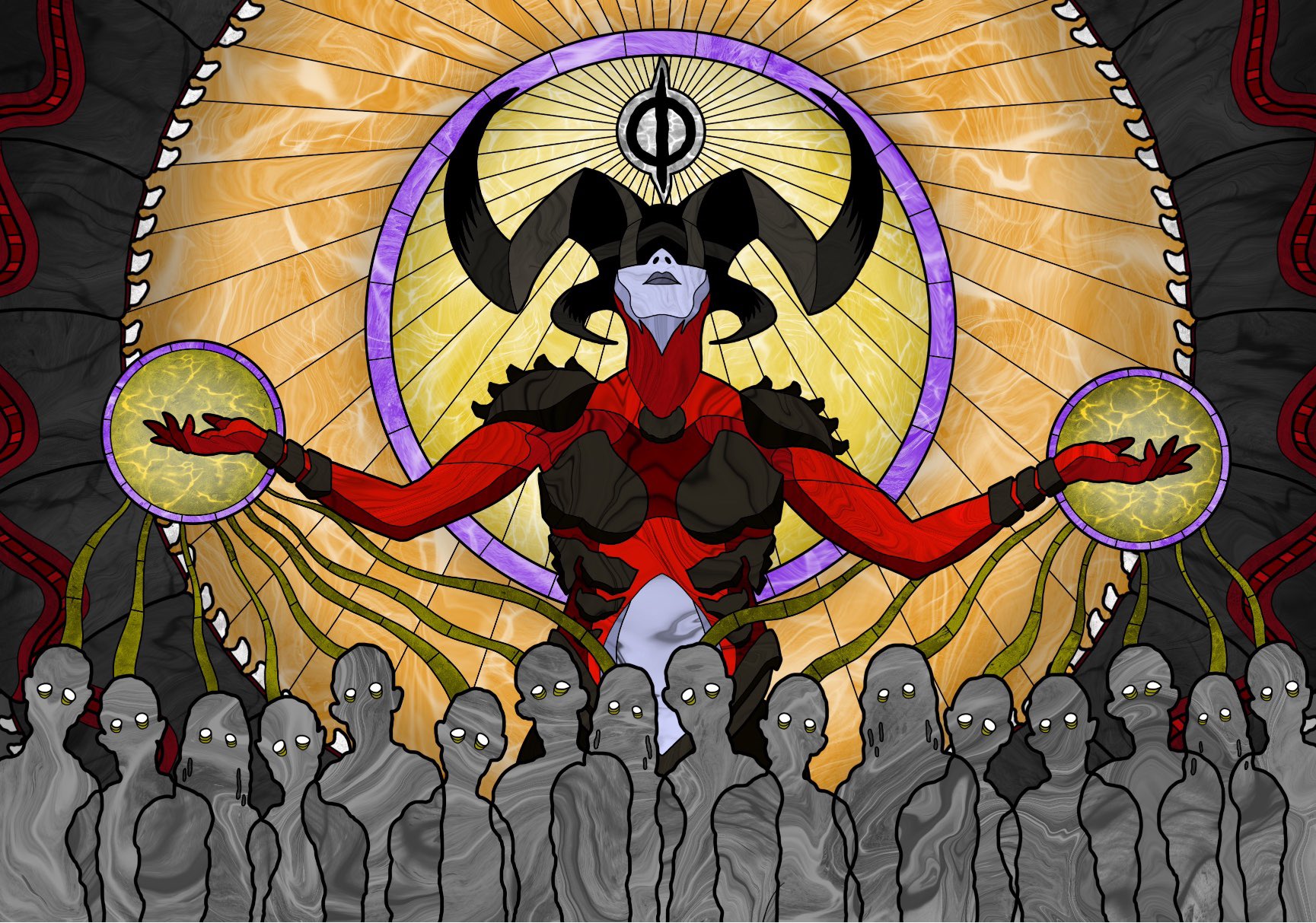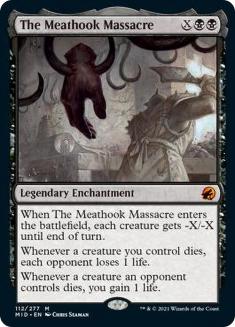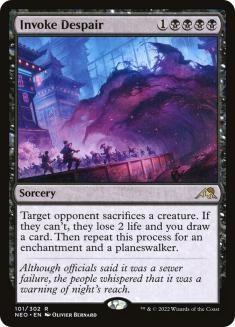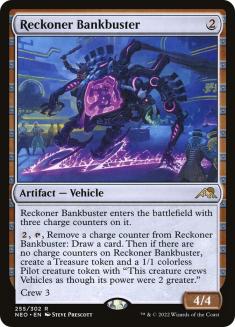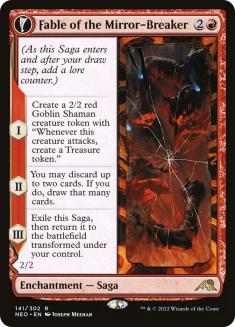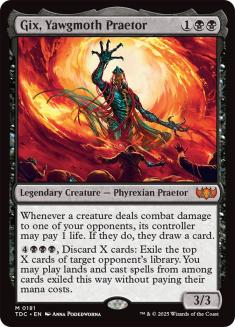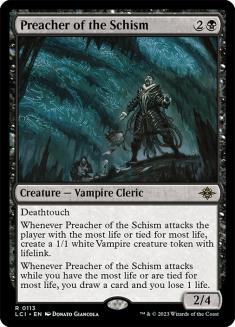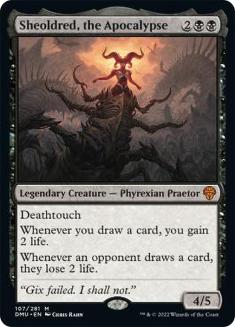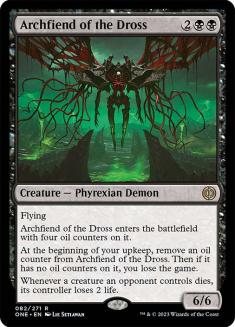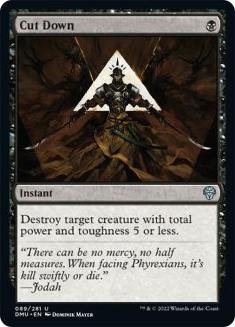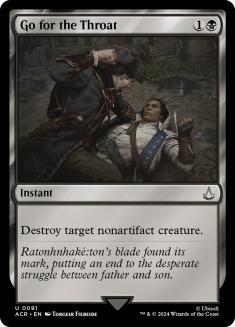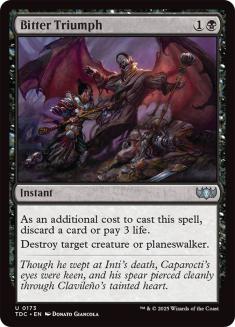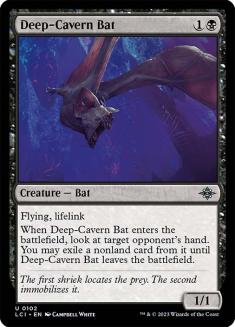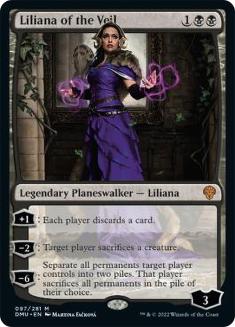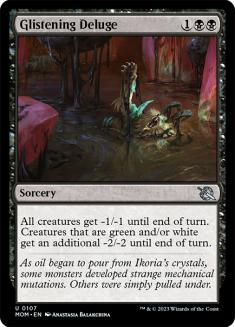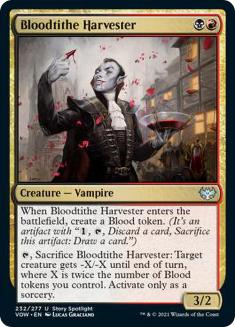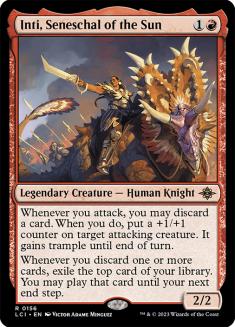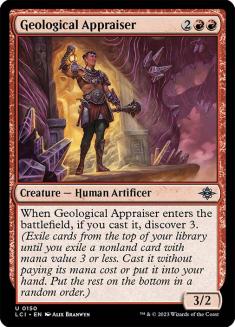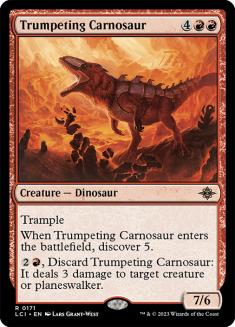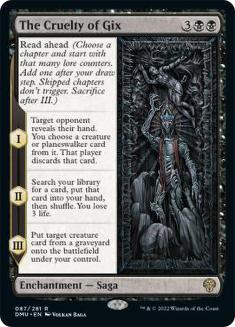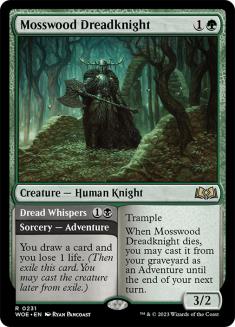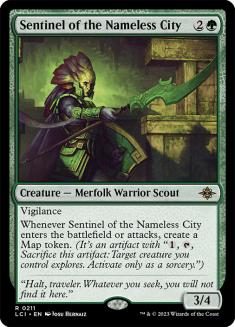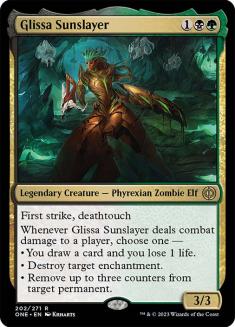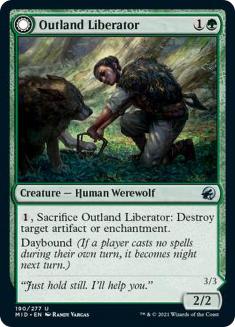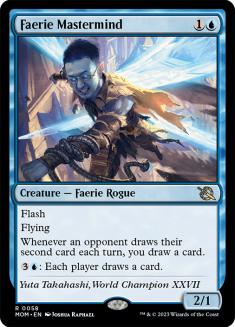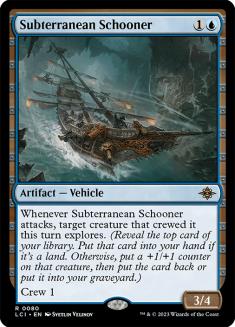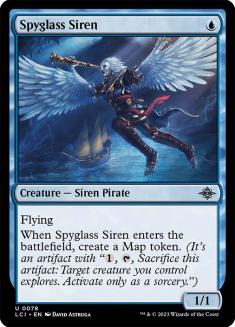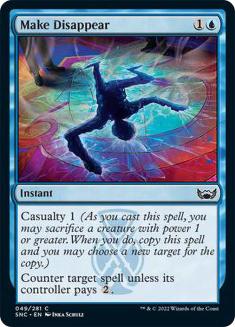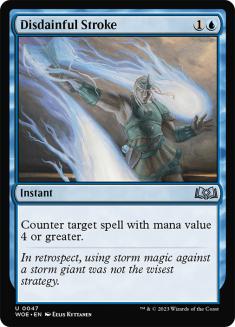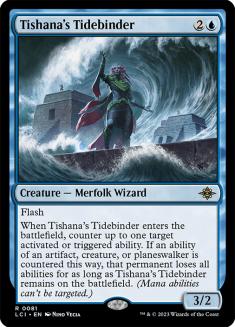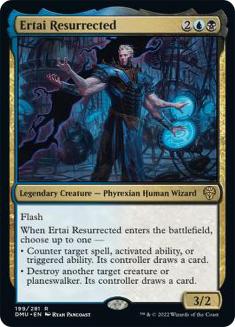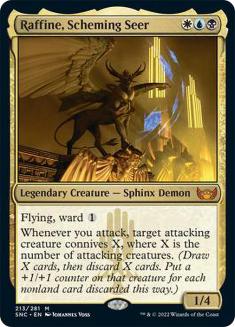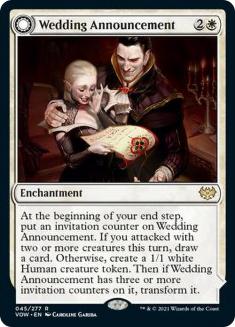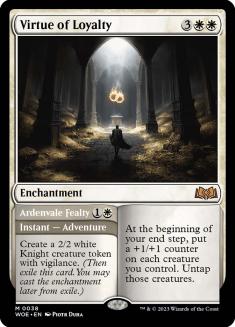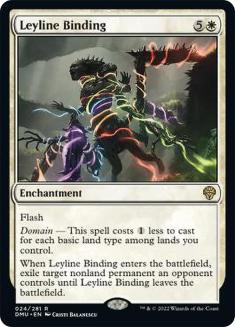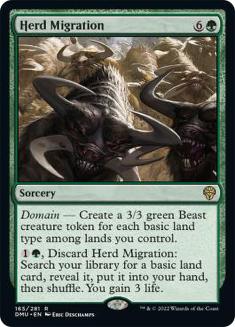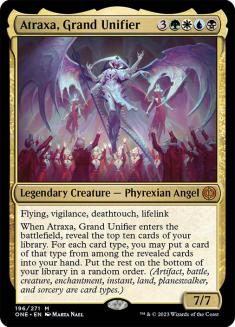The complaints about black struggling to find itself in this era of Magic design feel like ancient history now. From the beginning, this cycle of Standard starting with Innistrad: Midnight Hunt has been defined by black midrange in some form – and the extension of Standard’s length to three years has ensured those cards are still around for a while.
Recent Standard bans all aimed to keep these shells in check. Reckoner Bankbuster and Fable of the Mirror-Breaker weren’t just black midrange cards – their omnipresence across all colour combinations and archetypes was the main problem – but they did their best work there too. Invoke Despair was as mono-black as it gets, but the decks that leaned on it the most have rebounded easily from its loss.
The Threats
An all-star cast is working to honour their memories and keep black at the top.
Black has such a wide and deep bench of powerful threats that even former first-round picks like Graveyard Trespasser struggle to make the team these days. Newcomer Preacher of the Schism impressed players in both Standard and Pioneer once they figured out its text and play patterns. Gix, Yawgmoth Praetor has risen to prominence in this new crop of black midrange decks with the increase in strong two-drops to chain into it – its sudden and sharp price spike is the reassurance we needed that paper Standard may truly be back! That sticker shock is even stronger with Sheoldred, the Apocalypse now that it’s all over Standard too – but other options like Archfiend of the Dross make Sheoldred fight to keep her throne.
The Removal
When the threats are so strong, you need removal to keep up, and black continues its historic strength there. Go for the Throat is awfully close to Terminate despite the presence of several artifact-themed sets in Standard, and Bitter Triumph is ready to clean up the exceptions as well as the shockingly few planeswalkers still around. Cut Down serves a unique role in suppressing aggro and letting you break serve on the draw or from behind against other black decks. A new threat lining up poorly against Cut Down is enough to disqualify it.
The Glue Card
The Lost Caverns of Ixalan gave all of these decks a perfect gift. The Mesmeric Fiend formula has always been popular, and our first visit to Ixalan riffed on that with Kitesail Freebooter, but this seemingly innocuous new version is in a league of its own. Flying makes it the perfect partner for Gix or Raffine, Scheming Seer, and lifelink makes it highly relevant in races, especially if you can boost its power. Bat is a vital tool against decks like Domain Ramp that aim to go over the top of you, or the synergistic but mostly uninteractive creature decks like Bant Toxic that need to combine specific cards to do their thing.
In the black mirrors, Bat can break up their ideal curve – or steal their Bat to clear the way for your next play. If they don’t have removal, Bat gets to fly high; if they do, Bat can take that removal spell so that your real threat is more likely to live or force the opponent to spend their mana at an awkward time to kill the Bat and free their best card.
The Sideboard Stars
Black also boasts good sideboard tools against anything that slips through these cracks. Duress is an evergreen Standard card that needs no introduction and is a safe use of those slots. It’s easy to go wide in Standard, and the combination of sweepers and good blockers let black midrange keep up without trying too hard. Liliana of the Veil is yet another swingy three-drop that suffers on the draw, but at its best, it is one of the scariest cards in Standard, and it throttles the resources of decks like Domain Ramp that want to play as big a game as possible.
Pick a Colour. Any Colour.
Mono-Black is a clean and simple starting point, especially if you are an Arena player queasy at the thought of throwing all your rare wildcards at dual lands, but the mana in Standard is so good that any two-colour combination is easy and most three-colour combinations are doable.
Rakdos
Rakdos has already been dominant in this Standard timeline and is currently crushing Pioneer and Modern, so it’s a natural place to start. There are so many Rakdos variants across the archetype spectrum that ‘Rakdos’ is too vague and even ‘Rakdos Midrange’ is ambiguous. If you’re trying to hit Etali, Primal Conqueror with Breach the Multiverse – or vice versa! – you won’t have much in common with someone getting scrappy with Bloodtithe Harvester. Comparing and contrasting these takes on Rakdos deserves its own column – see you next week for that.
At the low end, red ‘only’ gets you Bloodtithe Harvester and Inti, Seneschal of the Sun – but what more do you need? Bloodtithe Harvester is a known quantity by now, but its in-built removal for opposing Deep-Cavern Bats is a new appeal. Inti has minor synergies with channel lands and Blood tokens, but the permanent pump from its +1/+1 counters matters a lot when many of your opponents have the same creatures and many of the best blockers have more toughness than power – Inti lets your Gix attack into their Gix or Schooner, for example.
As you go bigger, you get more flashy red spells. Geological Appraiser feels like an excuse to play more red cards when black already offers Sheoldred and Archfiend of the Dross, but the Trumpeting Carnosaur + The Cruelty of Gix package is a neat way to outmuscle the midrange mirrors that is still attainable against aggro.
Golgari
Golgari Midrange performed well at Worlds and keeps getting a steady stream of new cards – but it’s unclear what its unique selling point is now. Glissa Sunslayer is a proven menace and Sentinel of the Nameless City is a great new candidate – but black alone already has more excellent three-drops than you can play at once! Don’t get me started on Blossoming Tortoise when Sheoldred and Archfiend are right there…
Mosswood Dreadknight stands out more as a two-drop that can also grind out longer games, but both halves are less impressive now – a 3/2 body is easily embarrassed by cards like Preacher of the Schism and Subterranean Schooner, and Dread Whispers is risky in the face of Faerie Mastermind. The other secondary colours all have their own appealing two-drops now, and every black deck like this has Bat, so Golgari can’t lay claim to that slot on the curve.
The most compelling reason to come back to green might be the good old colour pie. If the format circles back to Wedding Announcement and Virtue of Loyalty being the midrange mirror-breakers or some dedicated artifact or enchantment deck pops up, green’s Naturalize effects give it counterplay there that Rakdos could only dream of.
Dimir
Faerie Mastermind took a long road, but is now a Standard staple. A cheap, evasive flash threat and mana sink is appealing enough, and getting to party with your opponent’s Up the Beanstalk or Gix, Yawgmoth Praetor is a nice bonus.
Subterranean Schooner looks jarring as a big, ground creature surrounded by small flyers, but its sheer size earns it a slot anyway. As an artifact creature that outsizes Cut Down, it’s frustratingly hard to remove, and being a Vehicle lets you curve out as desired against Domain Ramp while still keeping a threat around after a Sunfall.
Flying Men never looked so good! Black has its own version, of course, but Spyglass Siren is a meaningful upgrade to Faerie Dreamthief. You could play both (in a very aggressive Esper list maxing on both Raffine and Gix, for example), but Siren is a draw to blue in its own right. Having a one-drop makes it easier to get immediate value from Schooner or Gix and use all your mana later. You have so many two-drops that it’s refreshing to cast one on Turn 3 and also get to cast a Siren or use a Map token.
The big prize in blue is countermagic. Fighting on the stack is the best way to contain Domain Ramp, and only Dimir or Esper get to do that. Traditional counterspells like Make Disappear are less reliable thanks to Cavern of Souls, a reprint that led to Domain’s bizarre rebrand as Five-Color Angels instead of boosting Humans or Vampires and the like, but Tishana’s Tidebinder picks up some of that slack. Cavern can’t protect the main source of ramp in Invasion of Zendikar or the ever-looming Sunfall, so a well-timed Disdainful Stroke can still ruin their day.
Esper
Once you’re in blue, why not go even further? ‘Esper Midrange’ can mean almost anything at this point, from Dimir or Azorius with a minimal splash for Raffine to full Esper with a heavy commitment to all three colours. Esper Legends has disappeared again since its World Championships win – the new creatures are strong, so why go out of your way to play worse ones just because they are legendary? – and yet there are more Esper variants than ever.
Raffine is the reason to play Esper, but is it a good enough reason by itself? Raffine and Gix push you in the same direction, letting you execute that gameplan even more consistently – but you could just as easily argue that Gix gives you a taste of that without a whole extra colour, and there are other three-drops like Preacher of the Schism to fill out your roster instead.
Why White?
As black gets even greedier, white’s star has dimmed a little. Wedding Announcement used to be the trump card against similar decks and a reason to splash white – back when a much mopier Dimir Midrange deck was the default choice in Standard, Esper returned because everyone wanted to target the mirror with Wedding Announcement. These days, there are more flyers like Deep-Cavern Bat that you can’t stall with your tokens, and other payoffs like Schooner and Gix want material to work with right now rather than a delayed drip of creatures. Announcement is also fatally slow against Domain Ramp, the litmus test for any midrange deck.
It’s easy to get lost in the midrange mess. Working out how to get an edge against these ‘mirrors’ is hard on paper and can feel even harder once you’ve played the games, where you can feel frustratingly helpless against their best draws and hopelessly lost when the battlefield bogs down and every decision matters.
Whatever you think about Domain Ramp and its place in the format, its popularity and success make the stakes and tradeoffs clear for anyone fighting fair. It’s hard to be sure if Rakdos Midrange is better than Golgari Midrange, but you know that you’d take Dimir or Esper over either against Domain. Choosing how much you want to respect the Domain threat and which tradeoffs you’re willing to make against other midrange decks will be the central, recurring puzzle of this Standard season.
My Pick
Like everyone else, I’m still trying to get my bearings in Standard – but I’ve pledged my loyalty to Raffine for now.
Creatures (22)
- 4 Raffine, Scheming Seer
- 3 Sheoldred, the Apocalypse
- 2 Ertai Resurrected
- 3 Gix, Yawgmoth Praetor
- 4 Faerie Mastermind
- 4 Deep-Cavern Bat
- 2 Preacher of the Schism
Lands (26)
Spells (12)

Some of the numbers need tweaking, and you can tell which questionable sideboard cards I’m just trying out for now, but the basic approach here has felt excellent. Success in Standard has always required staying ahead of the pack and being agile in adapting your deck and card choices, but Esper is the perfect shell to do that with. Some form of Esper will always be at least good and often great. If you want to commit to a deck for the whole season, this is it.

